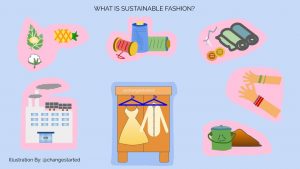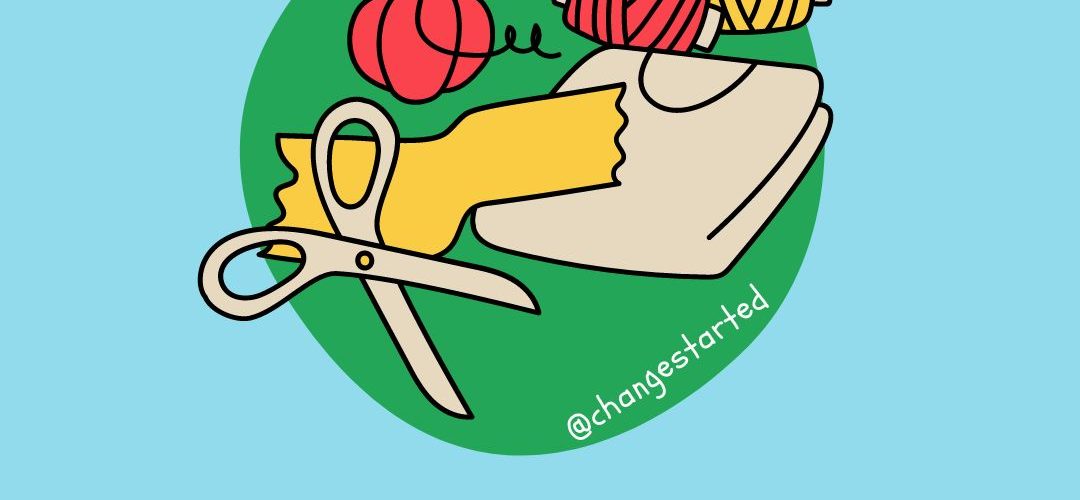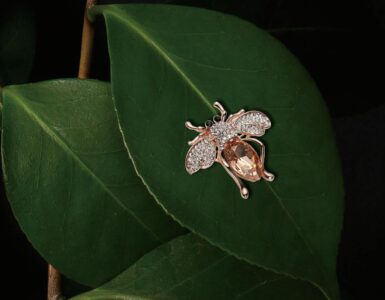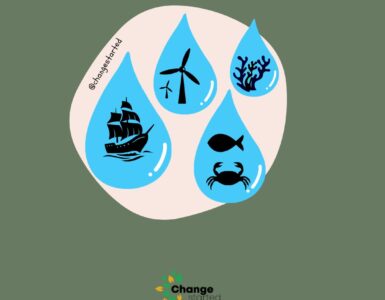Have you ever looked at your wardrobe and wondered where do these clothes come from, how are they made, and where will they go once their use is over.
Piles of clothes lie on our shelves, many of them will not be even worn more than a few times. Either we get bored, the size doesn’t fit or it is continuously waiting for a special occasion.
What’s the fuss you might ask?
It’s my money, my wardrobe, my clothes. True, but the fact remains that clothes and apparels are one of the biggest polluters in the world – the fashion industry ranks number 2 on the list.
The biggest reason for environmental pollution is the fabric used to make clothes.
What are fabrics which are not sustainable & environment friendly?
It all depends on the resources required to make the textile and the impact caused after the use. Below are some of the fabrics which are not environment friendly.
Polyesters: This fabric is partially derived from oil and hence polyester clothes might take decades or centuries to degrade. The clothes also release microplastics during washing.
Cotton: Though it is made from the fiber extracted from plants, the humongous amount of water required to make cotton clothes makes it environmentally unfriendly. Moreover, the plants require toxic pesticides & fertilizers, which degrades the quality of the soil where it is grown.
Rayon: The fiber itself is biodegradable and non-toxic, but the manufacturing of rayon clothes requires many chemicals, which not only get released to the nearby water bodies, but it also causes harm to the factory workers.
Nylon: Like Polyesters, nylon is also derived from oil which ends up polluting the landfills. The production of nylon releases greenhouse gases, and it uses large amounts of water.
Then, what’s the solution? – Sustainable Fashion
- The easiest and simplest option is to become conscious of your purchase. Buy only when you need.
- If you feel that the purpose of the clothes is over, you can consider upcycling them for some other use.
- The next thing which you can do is to donate clothes after use, there are many unfortunate people living across the globe who can use the old clothes.
- Finally, when shopping sustainably, consider buying fabrics that will have a longer lifespan than others, consume fewer resources, and do not pollute the environment.
Sustainable Fabrics
What is Sustainable Fabric?
To understand if the textile is sustainable or not, you should look at the following details.
- The source of the fiber – plant-based, animal-based, machine-made
- The resources used to make the clothes – water, pesticides, land usage, energy, forest usage
- The manufacturing process – chemicals usage, water pollution, labor policies, greenhouse gas emissions.
- The durability of the fabric – quality, long-lasting
- The usage – does not release microplastics & chemicals while washing, biodegradable.

Below is the list of sustainable fabrics, though all the textiles mentioned below are not perfect, we have provided a downside of each of them. It is up to us what we want to select as they are comparatively much better alternatives than polyesters and nylon.
Hemp
Hemp is a specific type of cannabis plant that doesn’t require too much water & pesticides and it also replenishes the soil.
Hemp fiber can be spun to different degrees to produce fabric resembling in texture similar to silk. Clothes made with Hemp fabric are also anti-bacterial, UV-resistant, and more breathable than traditional fabrics.
Cons: As hemp cultivation is banned in many parts of the world hence it is a little expensive.
Linen
Linen is a natural fiber from the flax plant, which can be grown in areas that are difficult for cultivation. The plants do not require fertilizers and are also used for making oil.
Clothes made with Linen have been used for thousands of years. The Linen fabric is light and extremely durable.
Cons: Linen fibers take months to grow, treat, and process until they are conducive enough to be woven into clothing which makes them expensive.
Organic Cotton
While normal cotton farming requires intensive use of pesticides and chemicals, organic cotton is produced without any pesticides, fertilizers, or genetically modified seeds (GMOs).
Cons: Cotton cultivation requires plenty of water.
Silk
Silk comes from silkworms when they make their cocoons, which are then collected by hand, boiled, and spun into threads.
Silk was first discovered in China and like Linen, Silk is used to make clothes since ancient times.
Cons: Silk is not very animal friendly as it requires the boiling process that kills silkworms in their cocoons before they’ve developed into moths. Fortunately, there are companies that make clothes using peace silk, where silkworms are given the time to develop into moths, and their empty cocoons are then collected to create peace silk.
Bamboo
Bamboo is a fast-growing, regenerative crop that doesn’t require fertilization and is often touted as a sustainable garment fabric.
Cons: There are places where forest lands are being cleared to make way for harvesting bamboo.
Wool
Wool is extracted from the skin of sheep, yaks, camels, and other similar animals. As the wool regrows on the animal bodies it does not impact the health of the animal.
The wool is cleaned and made into yarn which is woven into a fabric. Wool is also compostable, thermo-regulating, and doesn’t shed plastic microfibers.
Cons: Animal agriculture involves deforestation and the release of methane gases. In addition, there are cases of animal abuse in certain regions of the world.
Jute
Jute is one of the most ecological materials on Earth, as it is a natural fiber – it breathes, is sustainable, and dries quickly. Jute is known as the ‘Golden Fibre’ for its color and also for its biodegradable and environment-friendly qualities.
Jute does not require chemical pesticides in order to grow and thrive, it uses less water than cotton crops and replenishes within 4-6 months. It also acts as natural UV protection that removes the need for fertilizer or pesticide and it improves the soil fertility for future crops.
Cons: Though Jute is a sustainable fabric, the rough nature of fiber does not make it conducive for wearing it on bodies but is great for making rugs and bags.
Recycled Plastic fabric
As the name suggests, recycled polyester (rPET) or recycled nylon is a fabric that is made from recycled plastic.
Plastic waste like plastic bottles, fishing nets, and other plastic items are collected to make recycled plastic fabric. Recycled plastic fiber can be made from both post-industrial and post-consumer waste.
Recycled plastic fabric is a great sustainable fabric option to divert plastic from our landfills.
Cons: An issue with recycled plastic fabric is that like virgin polyester & nylon, it also releases microplastics during washing.
Fruit Fabric / Fabric from Agriculture waste
In recent times, a material made from fruit extracts and fruit waste is increasingly becoming a sustainable fabric choice.
Fabrics are made using fruits and vegetables like pineapple, orange, grapes, potatoes, etc. Even the clothing accessories like buttons & zips are being made with items like coconut and walnut shells.
The use of fruits and vegetables makes the clothes completely compostable.
An example of fruit fabric – Pineapple fabric – After the harvest of pineapple, the leaves that are left behind are collected and the fibers are extracted using machines. After that fibers go through an exhaustive process of washing, drying, and purification that results in a fluff-like material. This material is further mixed with a corn-based polylactic acid (PLA) and undergoes a mechanical process to create a non-woven substrate.
Cons: Making apparel using fruits is slow and time-consuming, hence the clothes made with fruits and vegetables can be on the expensive side. There are certain fruit fabrics that need blending with other materials and a high dose of chemicals as well.
Wrapping Up
To reiterate before buying clothes, make sure there is a need, look thoroughly in your wardrobe, and if you decide to buy the clothes, pick the brands that make clothes using sustainable fabric(s) listed above.
Make sure to check the sustainable fashion brand’s credibility and if the fabric is certified organic and naturally colored.
Let us know if you have found any other sustainable fabric or any brand which is into sustainable fashion, helping us become more environmentally friendly.
If you want to know more about it, we spoke to the founders of a few brands:
Hemp Fabric: Ecentric is a sustainable fashion brand that makes clothes using Hemp.
Sustainable Hemp Clothing – Ecentric – Salendra Gupta
Fruit Fabric: PECKD is a fully compostable fashion label that designs garments using fabric made from fruits & flower extracts.
Compostable Fashion brand PECKD – Hitesha Deshpande






Add comment